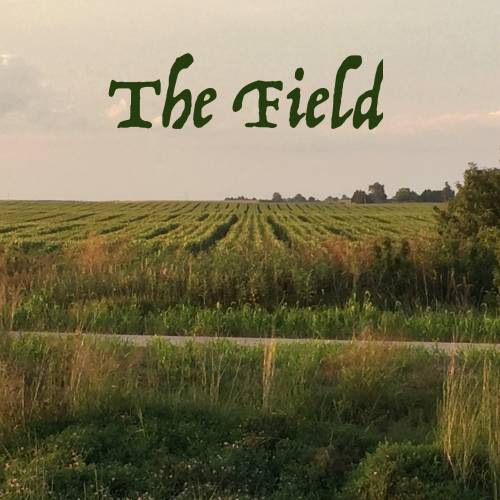
Photo Credit: K. Rummer
The Field
One Last Crop
by Ken Rummer
Beyond our yard is the trail and beyond the trail is the field. The field marches north to the dusty fog that marks the gravel of the next mile road. Thomas Jefferson’s grid of surveyed squares is much in evidence around here. This is land the glaciers ground to a notable flatness before retreating. Then the prairie grasses and the earth worms covered it with organic blackness, a thousand years to the inch.
The field was planted to corn this year. The neighborhood grapevine, in a late June report, thought it was to be sweet corn, but subsequent events told a different story. One day I saw a large, high-clearance farm machine working through the head-high corn. It left behind four de-tasseled rows and a single row still bearing tassels. Clearly, corn for seed was to be the produce of this field, expensive, patented, hybrid seed. Not sweet corn, but seed corn. (Can I blame it on older ears? Not the corn’s, but mine?)
The other part of the neighborhood news, that next year they will start planting streets and houses in the field, looks to be correct. The surveyors have been out there. Twenty-five hundred building permits a year in our growing city have to land somewhere. So this will likely be the last season, the last crop, the last harvest for the field across the trail.
Could this be a picture of retirement? One last season?
I had imagined retirement, at least initially, as a fallow time. Rest, recover, regroup. An extended holiday without a back-to-work day at the end of it. Hallelujah!
But a last season…
Do I really want to spend the time that remains to me, living as an uncultivated field, overrun with foxtail and pigweed and musk thistle? Back in the 80s during the Farm Crisis, some fields went back to the banks, and, times being what they were, some banks had trouble finding farmers willing to work for them, so here and there I witnessed fields that were not farmed for a whole year. It was not a pretty sight.
Could it be that retirement, in the divine reckoning, is surprisingly still “a time to plant”? (Ecclesiastes 3:2 NRSV)
But then, am I ready to roll the dice and risk loss to put more seeds in the ground? Am I willing to see them lost to the hail, lost to the drought, lost to the grasshoppers—lost any number of times, if only in my fears, before the harvest comes, if it comes at all?
And what seeds would I plant in a last season for my field? More sermons for churches? Another job in the presbytery? Walnut boards into furniture? More music from the violin? Time, and perhaps a bit of wisdom, for children and grandchildren? Words like these, row after row? Or something else all together, something not yet clearly formed, a door yet to open?
I have a print of a painting by Vincent Van Gogh. The glass was broken in the move, so the picture waits for a trip to the frame shop. In the meantime, it lives in the unfinished part of the lower level of our house, an area I have dubbed “The Attic”.
The painting, completed in 1888, is one of the artist’s takes on the parable of the Sower (Matthew 13:1-9). In Van Gogh’s rendering, the farmer strides across a worked field, seed sack over shoulder and under arm, and he casts the seed like color flakes on a new garage floor.
The parable focuses on the varying soils and the differing yields, but Van Gogh’s sower seems to be paying no attention to any of that. Not to the hungry birds. Not to the beaten path. Under the watchful eye of a bright yellow sun, the sower keeps on scattering seeds.
That picture bucked me up when I was working as a pastor. Looking at it again, this time without the glass, I wonder if it might have something to say to me now, in retirement, in what may be the final season for the field.

Ken Rummer, a recently retired PCUSA pastor, writes about life and faith from the middle of Iowa by the High Trestle Trail.